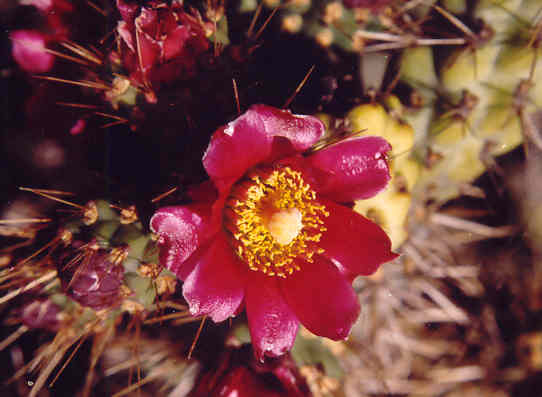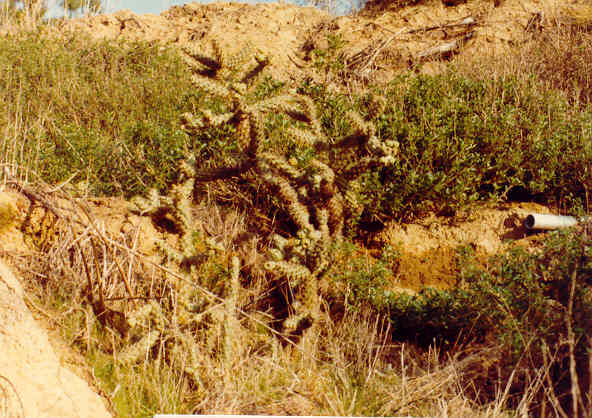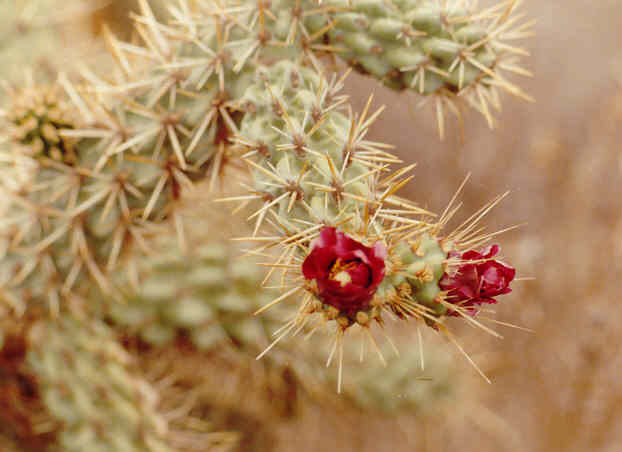
Opuntia prolifera Engelm.
Cactaceae
(Cactus Family)
Native
 |
Opuntia prolifera Engelm.Cactaceae
(Cactus Family)
Native
Coast Cholla |
Plant Characteristics:
Plant erect, +/- arborescent, 1-2 m. tall and of greater width, with many
spreading branches; older stems to ca. 1 dm. thick, the terminal joints 3-15 cm.
long, 2-3 (-4) cm. thick, fleshy, easily detached, the tubercles 1-2 cm. long,
ca. half as broad, with 4-12 rusty-yellow spines 1-2 cm. long and many long
glochids; spines acicular, smooth, with a full-length thin and paperlike sheath;
inner perianth less than 2 cm., purple-red; filaments yellow-green, generally
tinted purple; fr. fleshy, chained (fls. produced from areoles of older fr.)
green; spines 0.
Habitat:
Forming vegetatively propagated thickets on arid slopes below 600 ft.;
Coastal Sage Scrub; near and along the coast, Ventura Co. s. to L. Calif;
Channel Ids. April-June.
Name:
Old Latin name used by Pliny, formerly belonging to some other plant.
(Munz, Flora So. Calif. 314).
Latin, prowls, offspring and fero,
to bear. (Jaeger 102,208).
General:
Occasional in the study area.
I have heard of this species being called jumping cactus, probably in
reference to the easily removed joints. Just
brushing against one will cause it to break off and stick to you.
The spines are difficult to remove as they usually enter the skin at
different angles and have small backward directed barbs.
Photographed in Big Canyon and the Santa Ana Heights Bluffs.
(my comments).
Dawson in his Cacti of California,
page 17, refers to Opuntia bigelovi as
Jumping Cholla, and on page 15 he says in reference to the chollas, "The
vegetable kingdom has not produced anything else so fearfully armed."
Text Ref:
Hickman, Ed. 456; Munz, Calif.
Flora 312; Munz, Flora So. Calif.
320; Roberts 17.
Photo Ref:
Dec 1 82 # 15,16; June-Aug 90 # 11,12; May 06 #21A.
Identity: by R. De Ruff, confirmed by F. Roberts.
First Found: December 1982.
Computer Ref: Plant Data 207.
Have no plant specimen.
Last edit 6/
 |
 |
 |
December Photo August Photo June Photo